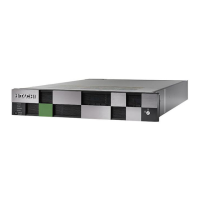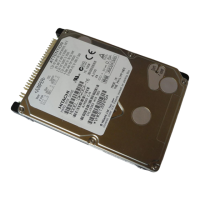Go to the next step even if the alternate path cannot be deleted.
2. Delete the pair.
a. From the primary storage system, delete the pair specifying the P-
VOL's actual LDEV ID.
pairsplit -g oraHA -S -d dev1 -IH0
Note: To delete the pair specifying the P-VOL, use the -S option of
the pairsplit command. Specify the actual LDEV ID (device name) of
the P-VOL in the -d option.
b. Confirm that the pair is deleted.
pairdisplay -g oraHA -fxce -IH0
Group PairVol(L/R) (Port#,TID, LU), Seq#, LDEV#.P/
S,Status,Fence, %, P-LDEV# M CTG JID AP EM E-
Seq# E-LDEV# R/W
oraHA dev1(L) (CL1-A-0, 0, 0)311111 2222.SMPL ----
------, ----- ----- - - - - - - -
-/-
oraHA dev1(R) (CL1-C-0, 0, 0)322222 4444.SMPL ----
------, ----- ----- - - - - - - -
-/-
3. Remove the failure.
The following example shows recovery from a pool-volume failure.
a. Recover a pool volume that configures the S-VOL (DP-VOL).
b. Display the status of the pool volumes to confirm that the pool volume
has been recovered.
raidcom get ldev -ldev_list pool -pool_id 0 -IH1
(snip)
LDEV : 16384
(snip)
STS : NML
(snip)
For a normal volume, NML is indicated in the STS column.
4. If the volume cannot be recovered, follow the procedure below to create
the S-VOL again:
a. At the secondary storage system, delete the LU path to the S-VOL.
b. Delete the S-VOL.
c. Create a new volume.
d. Set an LU path to the new volume.
5. Recreate the pair.
a. If you created a volume in step 4, set the GAD reservation attribute to
the created volume.
raidcom map resource -ldev_id 0x4444 -virtual_ldev_id reserve
-IH1
b. From the primary storage system, create the pair specifying the P-
VOL's actual LDEV ID.
paircreate -g oraHA -f never -vl -jq 0 -d dev1 -IH0
6-18
Disaster recovery of global-active device
Hitachi Virtual Storage Platform G1000 Global-Active Device User Guide

